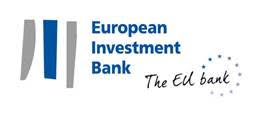

Invest
Pact Puts EIB at the Heart of EU Sustainability
The Pact of Amsterdam has been signed by ministers from across Europe. The Pact of Amsterdam means the European Investment Bank (EIB) will be at the centre of local and regional communities, working with governments to build a more sustainable future. It also sets out the Urban Agenda for Europe.
The Urban Agenda directs EU institutions to work for better funding, regulation, and knowledge-sharing for local and regional governments. Currently, 70% of Europeans live in urban area and that figure is expected to increase to 80% by 2050.
Jan Vapaavuori, Vice President at European Investment Bank, whose responsibilities include urban development, said: “The Urban Agenda of the EU is a blueprint for the economic, environmental, and social future of our cities and our citizens. The Urban Agenda specifies the importance of the EIB in providing smart funding to our smart cities. The Bank is key to improving funding and knowledge-sharing for urban authorities across Europe. The EIB’s range of Urban Agenda services and products will be vital in accomplishing the aims laid out in the Pact of Amsterdam.”
The Pact of Amsterdam specifies “the important role of the EIB” in:
– Financing investments in areas covered by the Urban Agenda, including the blending of grants and loans
– Cooperating with the European Commission to develop financial instruments that improve funding for local and regional governments
– Directing its urban lending, grant-loan blending, and advisory services toward areas covered by the Urban Agenda, thus supporting sustainable urban development.
The Urban Agenda for the EU aims to stimulate growth and make urban areas better places to live. To get that job done, it promotes cooperation between Member States, the Commission, other EU institutions, and urban governments.
For the EIB, a key partnership is with the European Committee of the Regions, the vital link between central EU institutions and hundreds of regional and municipal governments in all 28 Member States.
Markku Markkula, President of the European Committee of the Regions, said, “By involving all levels of government, the Urban Agenda will put the EU on a new track towards a more efficient collaborative culture that delivers results our communities expect. Local and regional authorities bear responsibility for 60 per cent of public investment, but often this is not nearly enough to create truly sustainable and inclusive cities, which is why we need more public-private partnerships. The Committee will continue to work closely with the EIB to improve innovative investment and access to funding which is paramount.”
The EIB and the Cmmittee of the Regions worked together on the EU Urban Agenda Toolbox, an aid to local and regional governments seeking to learn how the two institutions can help build sustainable communities. Read the Toolbox and other information on the EIB’s projects in urban development here.
For recent articles about the Urban Agenda, including case studies in EIB urban lending and a list of the Urban Agenda’s policy themes click here.


 Environment10 months ago
Environment10 months agoAre Polymer Banknotes: an Eco-Friendly Trend or a Groundswell?

 Environment11 months ago
Environment11 months agoEco-Friendly Home Improvements: Top 7 Upgrades for 2025

 Features9 months ago
Features9 months agoEco-Friendly Cryptocurrencies: Sustainable Investment Choices

 Features10 months ago
Features10 months agoEco-Friendly Crypto Traders Must Find the Right Exchange



























